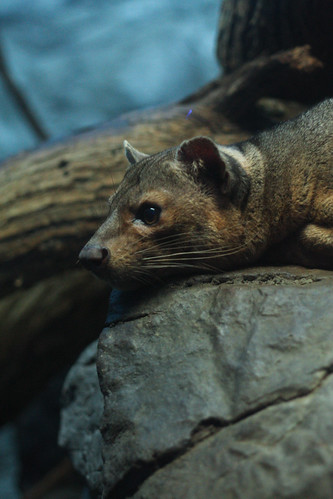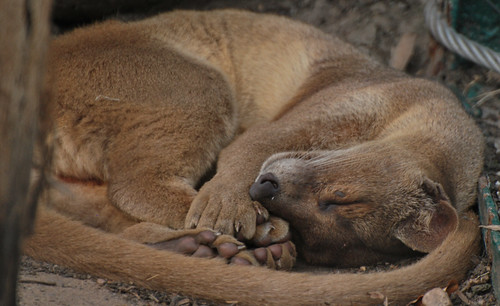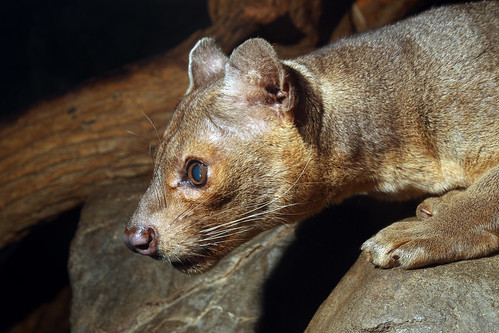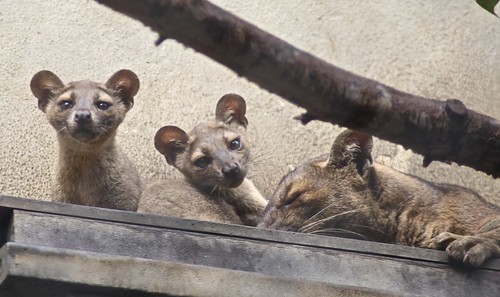 by kellinahandbasket
by kellinahandbasket The last two weeks we talked about some pretty well known animals, lions and horses. This week we're going to talk about an animal I think most of us are not very familiar with, the fossa!
 by Tambako the Jaguar
by Tambako the Jaguar Fossas only live in Madagascar.
There are less than 2500 fossas living in the wild.
 by Just chaos
by Just chaos The fossa is the largest predatory mammal on the island of Madagascar.
About half of the fossa's diet is made up of lemurs. They also eat birds, rodents. reptiles and small livestock like such as chickens and pigs.
 by Mark Dumont
by Mark Dumont
Fossas are comfortable high up in the trees and on the ground.
Fossas have reddish-brown to dark brown fur.
Fossas have reddish-brown to dark brown fur.
 by Life Lenses
by Life Lenses The fossa measures about 6 feet long from the tip of the nose to the tip of the tail and weigh about 26 pounds.
Fossas have a very long tail, usually the length of their body. Their tails help them balance as they quickly move and leap among the trees.
 by Life Lenses
by Life Lenses Fossas were thought to be a primitive species of cat until recently. The fossa may resemble a cat, but they are actually related to the mongoose.
The fossa has a cat like head with a dog like snout and small round ears. They also have retractable claws like a cat.
 by Keith@Fibonacci
by Keith@Fibonacci By having the ability to retract their claws, the fossa doesn’t wear them down walking, keeping them sharp for hunting prey.
The fossa walks on the soles of its feet, like a bear.
 by Mark Dumont
by Mark Dumont Fossas are solitary except during mating season.
Fossas tend to be nocturnal, but fossas will hunt during the day if food is scarce.
 by csyork65
by csyork65 Fossa have a scent glad at the base of their tail that they use to mark territory.
The fossa is endangered. Fossas require a large territory and deforestation is an extreme issue in Madagascar. Almost 90% of the island's forests have been destroyed.
Fossas are also killed by farmers trying to protect their livestock.
 by Just chaos
by Just chaos Fossa mother's make a den on the ground to give birth. She may use a tree hollow or an old termite mound for a den.
Fossas have 2-4 young in a litter. They are blind and toothless at birth and very dependent on their mother.
Baby fossas don’t leave their den until about 4-5 months.
Want more animal facts? Check out our other Wildlife Wednesday posts











